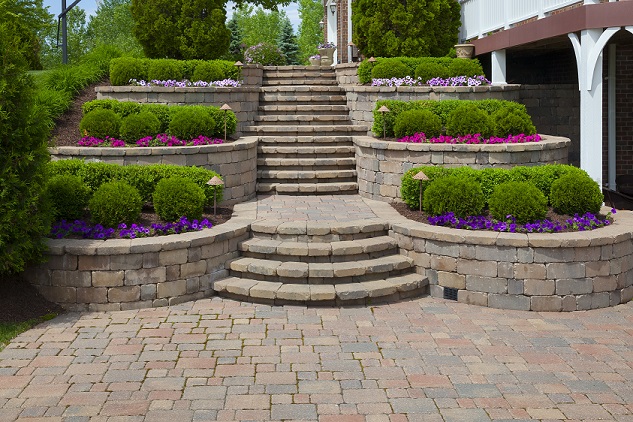Most people who seal their paver patios want to maintain the natural, unsealed look of the pavers which is why a Silane Siloxane water repellent sealer is the most popular type of sealer for patio pavers. Silane Siloxane sealers work to protect the pavers, both on the surface and within the pores, without changing the look or color of the pavers. They help to reduce damage and deterioration caused by water absorption, and reduce the growth of mold, mildew, and efflorescence. They are long lasting, easy to apply, and can be applied to virtually all types of pavers. The best Silane Siloxane sealers for pavers are the Armor SX5000 and the Armor SX5000 WB.
Silicate sealers are also classified as penetrating sealers, but they are rarely used to seal pavers. Pavers are very porous and silicate sealers are sensitive to over application. If a silicate sealer is over applied to a paver, the hardened white crystalline barrier that typically forms within the pores will also form on the surface. These crystals can’t be removed once formed which is why they are rarely used to seal paver patios.
The second most popular type of sealer for patio pavers is an acrylic sealer. Acrylic sealers are used to achieve a wet look, low gloss, or high gloss finish. Unlike Silane Siloxane sealers which work below the surface, acrylic sealers bond to the surface and will leave behind a visible surface film. The best acrylic sealers for paver patios are the Armor AR350 Sealer (wet look) and Armor AR500 Sealer (high gloss).
Comparison of the Types of Paver Sealers
| Silane Siloxane Sealer | Acrylic Sealer |
| Won’t change look | Leaves a gloss coating |
| Penetrates into surface | Bonds to surface |
| Lasts 7-10 years | Lasts 1-4 years |
| Reduces deterioration and mold growth | Enhances and protects surface |
How to Apply a Sealer to Patio Pavers
Before sealing your patio pavers you want to make sure you CAN seal the pavers. Many pavers can be sealed the same day as they are installed, but other pavers can’t be sealed for up to 1 year! Sealing your pavers before it is suggested to seal them can result in discoloration or sealer failure, or both. Once it has been determined that the pavers can be sealed, you want to clean the pavers.
Pavers can be cleaned with a pressure washer or cleaning solution. Once the pavers have been cleaned it is important to allow them to dry for at least 24-36 hours. The pavers may look dry an hour after cleaning, but you want to allow the water within the pores to evaporate as well.
Once dry, you can apply the Silane Silioxane sealer or the acrylic sealer. They can be applied with a roller or sprayer, and two coats should be applied. Apply in the later afternoon or evening for best results.
One sealed, allow the pavers to dry and keep them dry for 24-36 hours after sealing.
Should I Seal My Paver Patio?
Yes, you should. It isn’t required, bu there are many benefits to sealing patio pavers. Here are some of the many benefits:
- Sealers help to extend the life of the pavers by reducing damage and deterioration caused by water absorption.
- Sealers can help reduce staining caused by water absorption.
- Sealers help to reduce damage caused by freeze-thaw cycles, snow, and ice.
- Sealers help to reduce the formation of mold, mildew, and efflorescence on the surface.
- Sealers help to protect the pavers against deterioration caused by surface abrasion.
- Sealers can help to enhance dull or faded pavers, and help prevent pavers from fading (acrylic sealers only).



